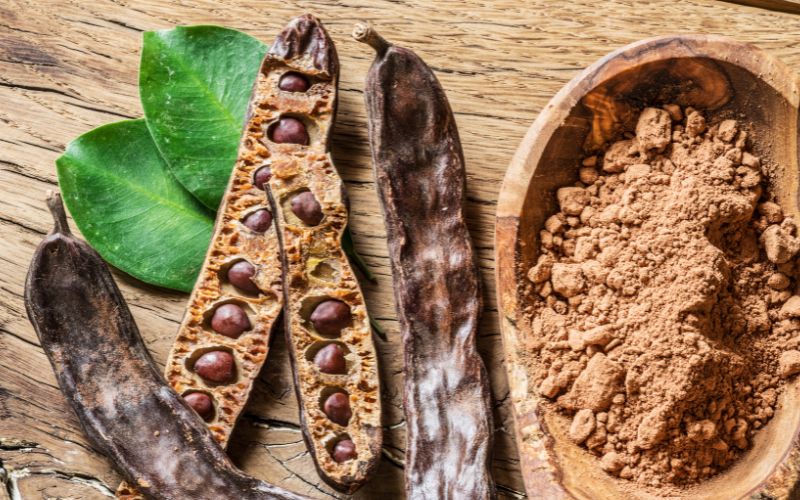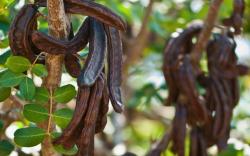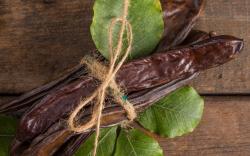- Walking
- When is it too hot to walk in Spain?
- What are the benefits of using Wikiloc i...
- Walk With Purpose and Raise Funds with t...
- WALK TALL - Informal Walking Group
- WalkTallSpain Walking Videos
- How to keep cool walking in Spain
- Walking Routes
- WalkTallSpain Merch
- PELIGRO Dangers of Walking & Hunting
- Physical & Mental Benefits of Walking
- More articles here »
- Writing
- Spain
- Therapies
- Partnership Hub
Carob Tree: Uses, Benefits, & Facts
Nestled within the picturesque landscapes of southern Spain, and seen on many of my walks, you'll find a tree that has played a significant role in the region's history and culture... the Carob tree ("St. John's bread" or "locust bean") This remarkable tree is a Mediterranean superstar, with some surprising uses and health perks. The Carob tree is a versatile evergreen tree that has flourished in the arid climates of southern Spain for centuries. With its distinctive pinnate leaves and elongated pods, the tree stands proud as a Flamenco dancer. It's a fascinating tree to come across.
Culinary Delights of Carobs
Move over, cocoa beans—there's a new chocolatier in town, and it's the Carob, a treasure chest of natural goodness hanging from the branches, begging to be picked.
When the pods have turned from green to chocolate brown, they are ready. Shake a branch and watch the ripe ones fall to the ground. They can be eaten immediately, as a great snack during a walk. Just don't eat the seeds inside.
The seeds are generally not consumed due to their toughness and relatively low palatability. They're known for their hardness and are often considered inedible for humans.
The husk and pulp are what steal the show, typically dried and ground into a fine powder, which is then used in the kitchen
This carob powder is where the sweetness and flavour hide, making it versatile and healthy.
- A natural sweetener
- A thickener in recipes and drinks
- Cocoa powder substitute
- A delicious nutritional snack
- Carob-based spread by blending with nut butter
- Energy bar ingredient
- Cereal topping
A carob has a unique taste that blends sweetness with earthy notes. The pods' natural sugars, combined with their low glycaemic index, make them an appealing choice for those of us seeking healthier alternatives to refined sugars. The versatility of carob powder extends to savoury dishes as well, acting as a thickening agent in soups and stews.
Health Benefits of Carobs
The pods are an excellent source of dietary fibre, aiding in digestion and promoting a healthy gut. Additionally, carob contains polyphenols, antioxidants, and essential minerals such as calcium and magnesium. These compounds contribute to improved heart health, reduced inflammation, and even potential anti-cancer properties. Carob is said to be allergen-free and caffeine-free, making it suitable for most. A SINGLE carob pod typically contains
- Calories: Up to 65 calories
- Carbohydrates: 15 grams
- Fibre: 3-5 grams
- Protein: 1 gram
- Fat: Negligible
- Calcium: important for bone health
- Potassium:, an essential electrolyte
- Phosphorus: vital for bone & cell health
- Vitamin B6: for brain function & metabolism
- Iron: necessary for oxygen transport in the blood
Propagating the Carob Tree
If you're inspired, like me, to cultivate the Carob tree in your own garden, propagation can be an exciting project. The most common method is through planting the seeds which are found within the pods. Begin by soaking the seeds in water, their own little spa day, for 24hrs to soften their hard outer shells. Then, plant them in well-draining soil and keep them consistently moist. Germination may take several weeks, so patience is key. Once seedlings have developed sturdy roots, they can be transplanted to a permanent location where they can thrive under the Spanish sun.
8 Fun facts about Carob Trees and Pods
- They have been historically used as a standard for measuring precious metals due to their consistent weight
- The Carob shell can be used as animal feed or as a source of organic material for composting
- Some cultures, use them as a natural dye or for tanning leather
- Ever wonder why the name "locust bean"? Because even the locusts know a nutritious meal when they see one!
- The tree is a Leguminous tree. Known for their ability to fix nitrogen in the soil through a symbiotic relationship with nitrogen-fixing bacteria
- The trees are resistant to drought, take to rocky arid soil, and are tolerant of salt.
- The glossy green leaves are fairly flame-resistant, which makes carob trees a great fire barrier
- Carob is naturally high in fibre and has no caffeine, it’s ideal for people with high blood pressure
Have you ever encountered the fascinating Carob tree or tried its delicious delights?
Share your thoughts and experiences in the comments below!
I would love to hear your stories, recipes, and gardening adventures with this Mediterranean gem.
(Images via Canva)
Previous comments
Pamela Meade
"(2024) discovered these on a walk in Terreros and wondered if they were carob although not a fan of chocolate, maybe I should indulge for health benefits!! "
Leave a comment about this article.
Please only enter text (up to 1500 characters) and no symbols.






.jpg)
